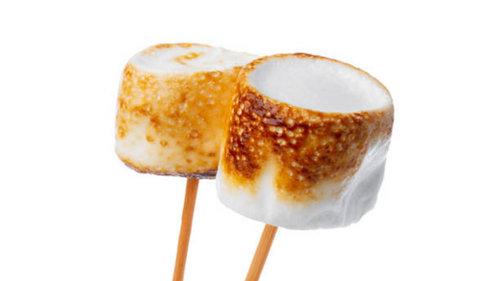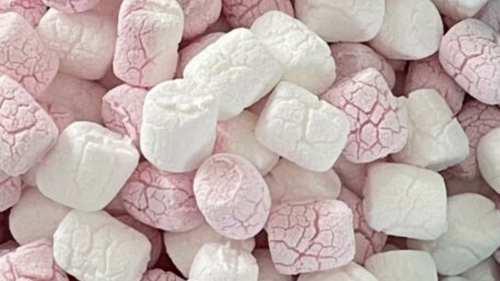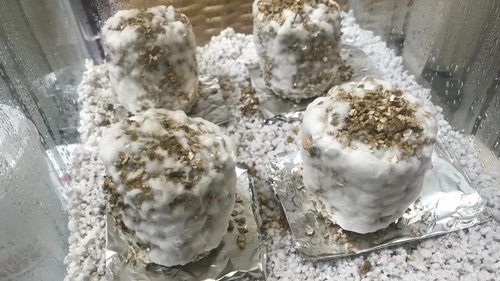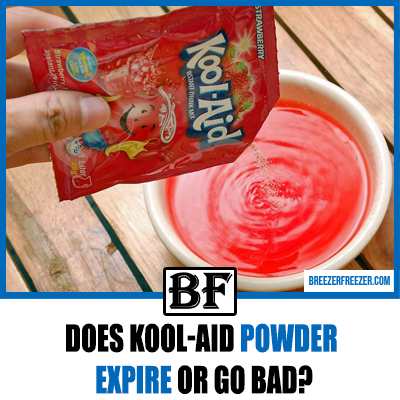Do marshmallows go bad?
Americans love their marshmallows, and around 90 million pounds of them are sold each year in the US. If you have never considered air as an ingredient in foods, then think again, without air, marshmallows can’t achieve their fluffy pillow life texture that we all adore so much.
Did you know the ingredient that causes marshmallows to be stretchy and unctuous is gelatin? Gelatin comes from boiled animal parts such as collagen to add to marshmallows.
This article gives you the low down on marshmallows and how long you can keep them safely. We will also answer some frequently asked questions about this delightful candy.
Let’s dive in.
How long do marshmallows last?

Marshmallows have a long shelf life of 2 to 6 months, depending on how they are stored. This confectionery contains a lot of air, an essential ingredient; otherwise, marshmallows would be a flop.
However, just because the best-before date can give the life of the marshmallow in a sealed bag six months before consumption, it recognized that best-before dates and expiry dates are voluntary additions to most foods and indicated a point when the confectionary will be at its peak quality.
After the best-before date has passed, you can still expect your marshmallows to be good for at least another 6 weeks and possibly longer.
But be aware that when you open the bag of marshmallows, they have a life of about 1 week if they are not consumed immediately.
How to store marshmallows?
Keeping your marshmallows in good condition once the bag is opened is about storage. Marshmallows can come in enormous bags that are good for the family to share, but there are too many marshmallows to eat and share in one sitting, so inevitably you will need to store marshmallows.
The best option is to place your marshmallows into an airtight container to keep the moisture away from the marshmallows. Keep the airtight container in a cool pantry, but marshmallows are pretty hardy when it comes to longevity and can be stored at room temperature for three weeks in an airtight container.
Storing marshmallows in a jar with a sealable lid is acceptable, and a plain Ziploc bag will work, also. When storing in containers or a Ziploc bag, don’t be tempted to cram the marshmallows, so they are squished. This will compromise their squishy pillow shape and remove some of the air.
Can you freeze marshmallows?

Surprisingly, freezing marshmallows is a great idea. If you see an irresistible deal on marshmallows, then be aware that marshmallows can be frozen, extending their life up to a year if continuously frozen at 0℉.
However, packaging the marshmallows properly is essential to avoid freezer burn. To package the marshmallows ready for the freezer, you may wish to place them in Ziploc bags with as much air expelled as possible (don’t crush the marshmallows).
Then place the Ziploc bags in an airtight container and freeze them, this should avoid freezer burn, and after 12 months, your marshmallows should be as good as the day you bought them.
It said that eating frozen marshmallows is oddly satisfying, with the marshmallow becoming slightly chewy, which compliments the sugary sweet taste. Marshmallows don’t freeze rock hard like ice, making them suitable for ice creams and other dessert ideas you may have, or just eat them frozen for a different but yummy experience.
How to keep marshmallows fresh?
It is pretty easy to keep marshmallows fresh due to their stable shelf life. Assuming you live in an average climate, spring, summer, fall, and winter marshmallows will happily sit at room temperature in an unopened bag, but it is best to store them in the pantry where it is slightly cooler.
If you don’t have a pantry storing marshmallows in a kitchen cabinet away from the oven and sunlight is an excellent choice for storage.
If you live in a warmer climate, you may consider storing marshmallows in the fridge to keep them cool.
If the packaging is open, you will need to store the marshmallows in an airtight container that can keep moisture out.
Moisture will melt some of the surface sugars in the marshmallows and make them feel sticky. This alone does not mean the marshmallows are not suitable to eat, they are just a little messy and the marshmallows can clump together.
You can provide a remedy for sticky marshmallows by adding a little confectioner’s sugar so they unstick.
Do marshmallows grow mold?

It is possible under the right conditions, but sugary substances like candy and marshmallows don’t grow mold. Sugar recites the mold spores, and in most cases, it is hard for bacteria to settle on sugary confectionery.
However, marshmallows are not all sugar and contain egg whites and flavorings that can attract bacteria and mold spores. It is all about how the marshmallows are stored.
Do marshmallows go bad?
There is some conjecture as to if marshmallows do go bad. It’s undoubtedly the case that they can become inedible, which you could interpret as being bad.
Fresh marshmallows have a fluffy or sponge-like feel and are delicious. Their mild and inviting scent is pure sugar. Some describe them as velvety but should be sticky when fresh. Look for signs of deterioration if you are unsure how long you have been storing your marshmallows.
Odor
Its rare top is miss guided by your nose. If the marshmallows don’t smell right or have a funky odor, they are not fit to eat and should be discarded.
Texture
Marshmallows that have been at the back of the kitchen cabinet for a long time can become hard as they dehydrate. They may become chewy or even too hard to chew and are not fit for consumption. When marshmallows are exposed to moisture, they become sticky and even gloopy. Moisture can contain bacteria, so discard the marshmallows if they are gloopy.
Visual check
Marshmallows should look buoyant and fluffy. If they look any different from this, it’s a problem. If the marshmallows have turned yellowish, this signifies a deteriorating product and should be discarded.
Final thoughts
It takes a long time and poor storage for marshmallows to go bad, and if stored correctly, they can survive for up to six months. If six months are not long enough, then freeze marshmallows.
Marshmallows are not only delicious but also versatile confectionery with a stable shelf life that can be enjoyed months or a year after they were initially purchased.





